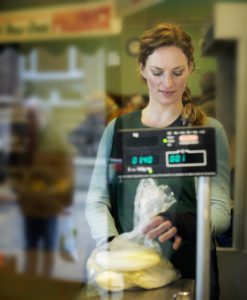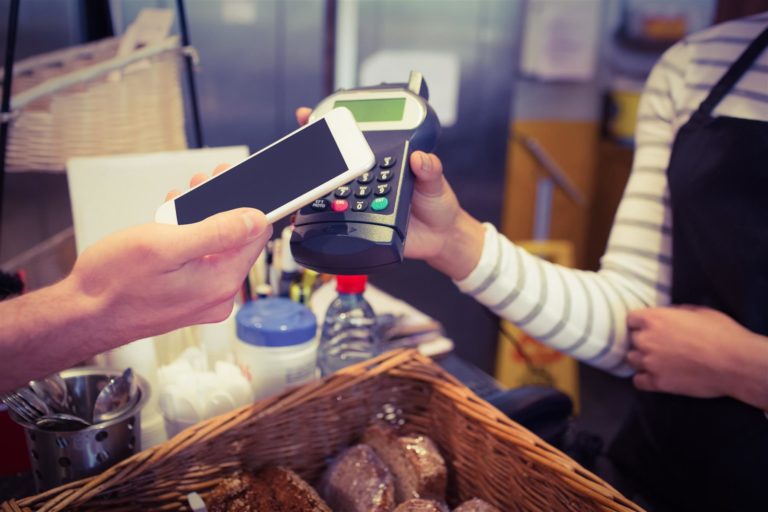Guest post by Hervé Lesage, Xerox Communications Services Marketing
Customer behavior catalyzed by technology has changed the way we do business. Retail is no exception, as innovative retailers lead the charge of disruption. AR/VR, artificial intelligence, robotics and sensors are already creating different interactions with customers and enhancing process efficiency.
At Lowes, for instance, retail service robots greet customers, scan products to determine availability and guide customers to products. EBay partnered with Australian retailer Myer to create a virtual reality department store, where consumers explore thousands of products, access price and product information, and add items to their basket. (Source: Deloitte, Global Powers of Retailing 2017).
Retail Customer Expectations Tougher Than Ever
A quality product for a good price still is a great formula. However, the digital life pushes expectations and limits, and retailers need to be bold to differentiate their brand. This means creating a valued experience that’s more fun, informative and convenient on top of providing excellent products and services. But retailers will need help.
Personalized brand engagements, either mobile or other channel of choice, rule the day. Retailers could certainly supply these by turning customer data into actionable insights. This would drive more relevant engagement campaigns across physical and digital channels, and the alignment of customer journeys according to preferences.
Closing Gaps Between Experience Expectation and Reality
Unfortunately the broadly touted omnichannel recipe hasn’t fully baked. Implementation hurdles include:
- Budget constraints
- Legacy systems
- Integration with existing systems
- Lack of expertise and internal resources
The main issue though is turning data into action. In fact, according to the PwC Total Retail 2017 survey, 39% of retailers ranked “Ability to turn customer data into intelligent and actionable insights” as one of their greatest challenges.
Tons of Data, But Still No Single View
Retailers garner heaps of data from store visits, POS, clickstreams, mobile, call centers, e-commerce, email and direct mail marketing, social media, but they aren’t really using the information to personalize interactions with consumers. No surprise that many retailers struggle to implement a single view of the customer.
This shouldn’t be a surprise, considering that brand leaders maintain an average of 39 disparate front-end systems to manage consumer engagement (source: Deloitte, The Retail Renaissance).
Communications Overhaul Delivers Better Customer Experience
It’s urgent that retailers move from transactional contacts to personalized engagement and manage all touch points. Too many focus only on product value proposition and attributes, but this isn’t the main battlefield. In the digital era, experience is where the battle for customers happens.
This is where digital technologies come into play:
- Optimize customer experience according to channel preferences
- Integrate both data and contextual information to enhance engagement
- Tap into all customer information sources
- Map touch points and deliver customized communications regardless of channel
Consulting Services Help Retail Make Transformation Journey
Leveraging the right digital technologies is just one step of the transformation equation. Retailers may need specialized help to ensure they also have the right workflows in place and the right talent to execute the operations.
For example, Xerox Communication Advisory Services (CAS) starts with a discovery process to establish current state, explore processes, and map the customer journey and touch points. These steps lead to an outline of transformation opportunities. This helps the retailer understand customer needs throughout the buying journey, how those needs are met today and how the business must transform to stay relevant. The discovery process leads to a communications operating model and shows how to implement communications automation and digital transformation.
By comparing a retailer’s communications and delivery against benchmark data of innovative, efficient retailers, professional communication advisors can spot opportunities for increasing effectiveness and efficiency.
This holistic overhaul can include these retail communications areas:
- End-to-end communications supply chain management
- Creative development and brand consistency
- Content creation and curating
- Print production including POS, collaterals, direct mail and e-mail, transactional communications
- Digital communications such as digital magazines, catalogues, e-books
End-to-End Approach Streamlines Retail Marketing Operations
A Canadian grocer improved campaign and in-store marketing effectiveness, while driving down costs. Their solution resulted in 10% cost savings across the marketing supply chain.
Their challenges:
- Manage marketing execution: creative, procuring and producing print, delivery
- Gear up internal print operations to support high-quality marketing campaigns
- Reduce suppliers list
As a partner, Xerox implements and manages end-to-end creative, print, inventory, and fulfillment, including stock management, color and quality control, and store-specific kitting. The change helped the grocer focus on strategic activity, while leaving execution to Xerox.
Now high-quality campaigns launch on time and on budget. The new store opening décor process has been streamlined to save costs. Customer activation improved with a focused marketing approach.
We’ve helped this retailer maximize the value of print for:
- Point-of-sale displays
- Permanent décor
- Labels
- Publications
- Back-office materials
Many Retailers Making Successful Transformation
Another example of retail solutions can be found in this story about Morrison’s, a grocer with over 400 stores. New people, technology and process solution met the goals of getting high-quality marketing campaigns to hundreds of stores within days, while reducing costs, and freeing up time and resources. Find out how.



